A well-planted garden with vibrant flowers can transform any outdoor space into a peaceful and inviting retreat. Flowers add color, fragrance, and life to your garden, creating an environment of beauty and serenity. In this article, we’ll explore five stunning flowers, explaining what they are, how to plant them, and the benefits they bring to your garden.
1. Roses: Timeless Elegance
Roses are iconic flowers known for their layered petals, rich colors, and intoxicating fragrance. They come in various shades, from classic red to soft pinks and whites. These flowers symbolize love and beauty, making them a beloved choice for many gardens.
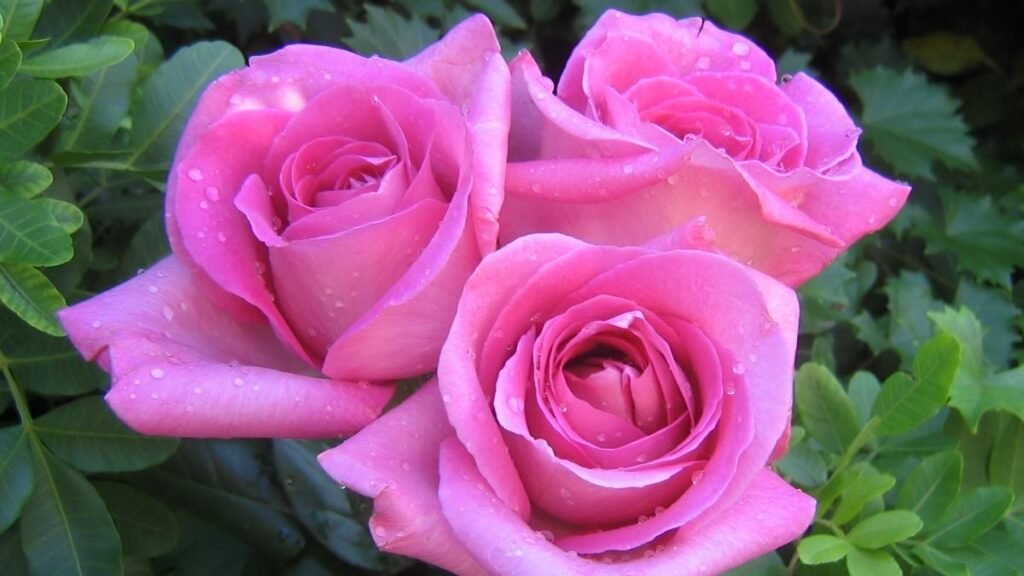
How to Plant Roses
- Choose a sunny spot with at least 6 hours of direct sunlight daily.
- Plant in well-drained, slightly acidic soil.
- Dig a hole twice the size of the rose’s root ball and add compost to improve soil quality.
- Space roses 18-24 inches apart for proper airflow.
- Water deeply once a week, ensuring the soil is moist but not waterlogged.
- Prune dead or diseased branches regularly to encourage healthy growth.
Benefits of Roses
- Aesthetic Appeal: Roses are a garden showstopper, offering a stunning array of colors and shapes.
- Fragrance: Their sweet aroma can reduce stress and promote relaxation.
- Pollinator Attraction: Roses attract bees and butterflies, helping maintain a healthy garden ecosystem.
- Long-lasting: With proper care, roses can bloom year after year, providing continuous beauty.
2. Tulips: A Splash of Color
Tulips are cheerful spring flowers known for their bold, bell-shaped blooms and vibrant colors. They come in a variety of shades like red, yellow, pink, purple, and white, making them an excellent choice for adding color to your garden in early spring.
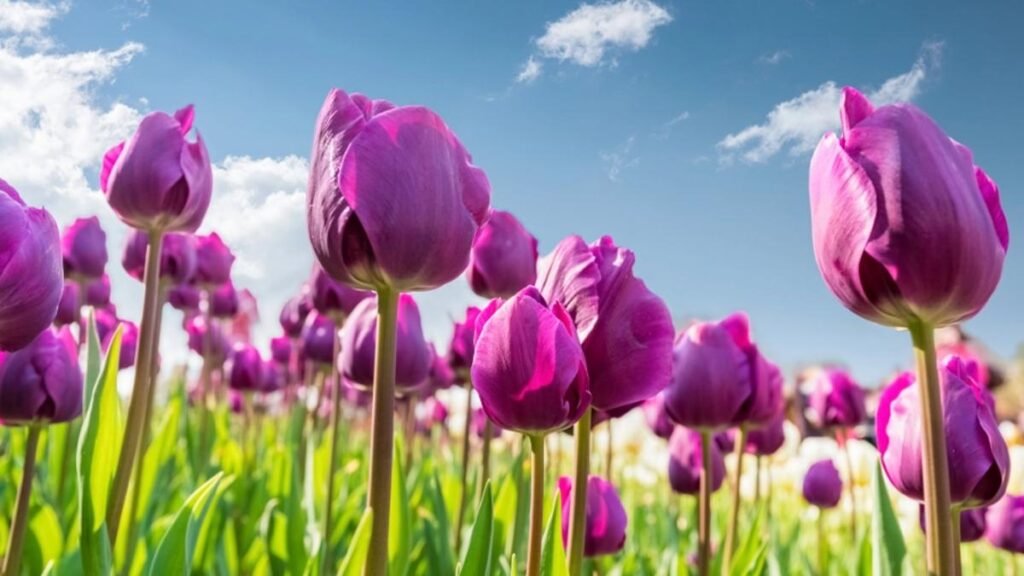
How to Plant Tulips
- Plant tulip bulbs in the fall, about 6-8 inches deep.
- Choose a sunny spot with well-drained soil.
- Space the bulbs 4-6 inches apart, with the pointed side facing up.
- Mulch over the planted bulbs to protect them from frost during winter.
- Water once when planting, but avoid over-watering as tulips prefer dry soil during winter.
Benefits of Tulips
- Vibrant Color: Tulips add a bold, cheerful touch to your garden with their striking colors.
- Low Maintenance: Tulips are relatively easy to grow and require minimal care once planted.
- Pollinator Friendly: Their bright colors attract bees and butterflies, enhancing biodiversity in your garden.
- Drought Tolerant: Once established, tulips can tolerate dry spells, reducing the need for frequent watering.
3. Sunflowers: Cheerful and Bold
Sunflowers are large, bright flowers with golden-yellow petals that radiate warmth and positivity. These flowers symbolize happiness and optimism, making them a perfect choice for adding energy to your garden.
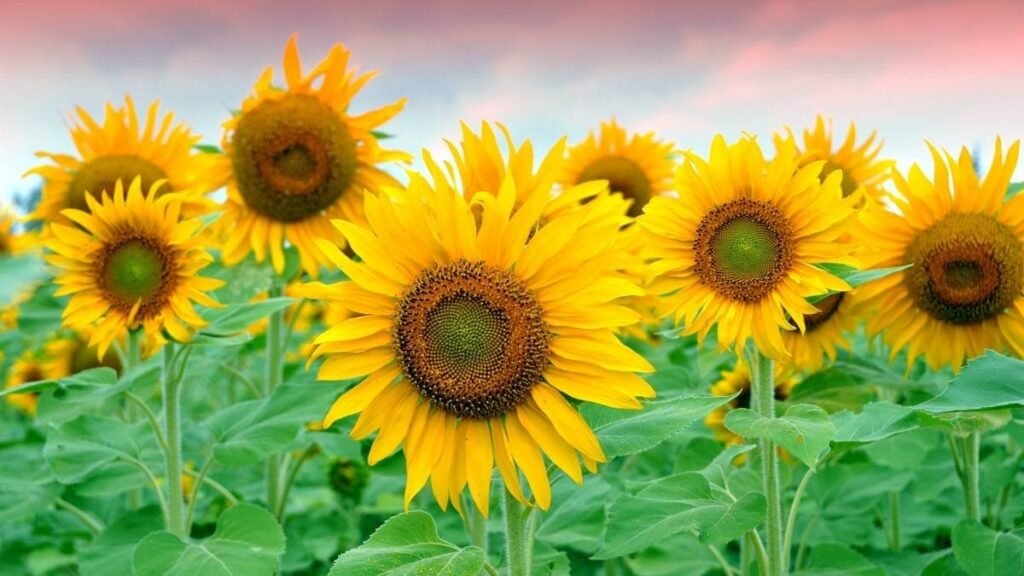
How to Plant Sunflowers
- Plant sunflower seeds directly into the soil after the last frost.
- Choose a sunny spot with well-drained soil.
- Space seeds about 6 inches apart for smaller varieties or 12 inches for larger ones.
- Water regularly, especially during dry periods, but avoid over-watering.
- Sunflowers grow tall, so plant them at the back of flower beds or along fences.
Benefits of Sunflowers
- Visual Impact: Their tall, golden-yellow blooms make sunflowers a focal point in your garden.
- Attracts Pollinators: Sunflowers attract bees, butterflies, and other beneficial insects.
- Edible Seeds: The seeds can be harvested for snacking or making sunflower oil.
- Soil Improvement: Sunflowers can help improve soil quality by absorbing excess nutrients.
4. Lavender: Fragrant Beauty
Lavender is a fragrant herb known for its calming properties and soft purple flowers. It’s a favorite for gardeners who love both beauty and aroma. Lavender is often used in aromatherapy to reduce stress and promote relaxation.
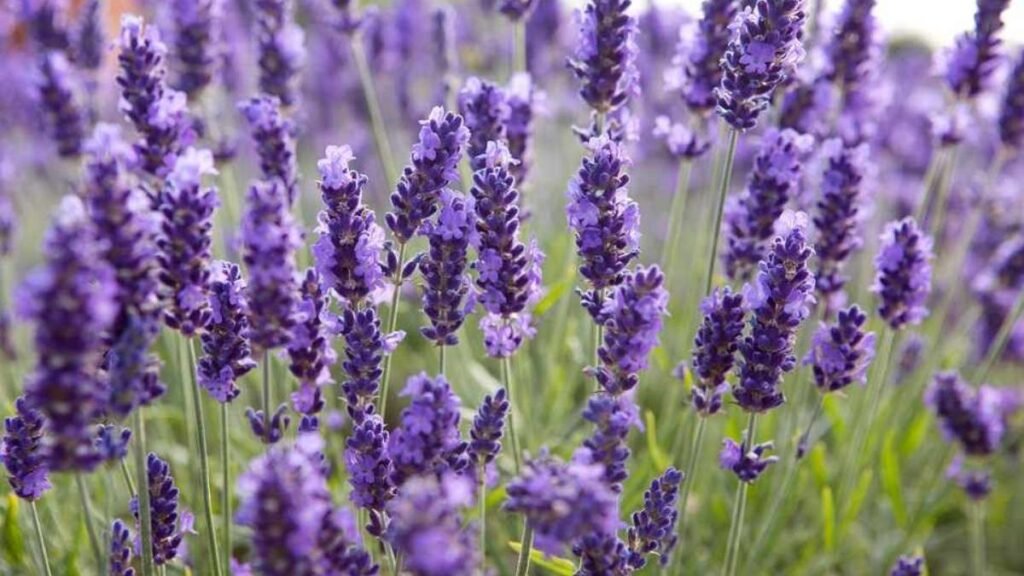
How to Plant Lavender
- Choose a sunny location that receives 6-8 hours of sunlight per day.
- Plant in well-drained soil with a slightly alkaline pH.
- Space plants 18-24 inches apart for good airflow.
- Water sparingly once the plant is established, as lavender is drought-tolerant.
- Prune regularly to maintain shape and encourage healthy growth.
Benefits of Lavender
- Calming Scent: Lavender’s fragrance has therapeutic properties, promoting relaxation and reducing stress.
- Attracts Pollinators: Bees and butterflies love lavender, making it a great addition to pollinator-friendly gardens.
- Low Maintenance: Lavender thrives with minimal care and is drought-tolerant once established.
- Aesthetic Appeal: Its purple blooms add elegance and charm to any garden.
5. Daffodils: A Symbol of Renewal
Daffodils are one of the first flowers to bloom in spring, making them a symbol of renewal and hope. Their bright yellow petals and trumpet-shaped flowers bring an uplifting touch to any garden after the long winter months.
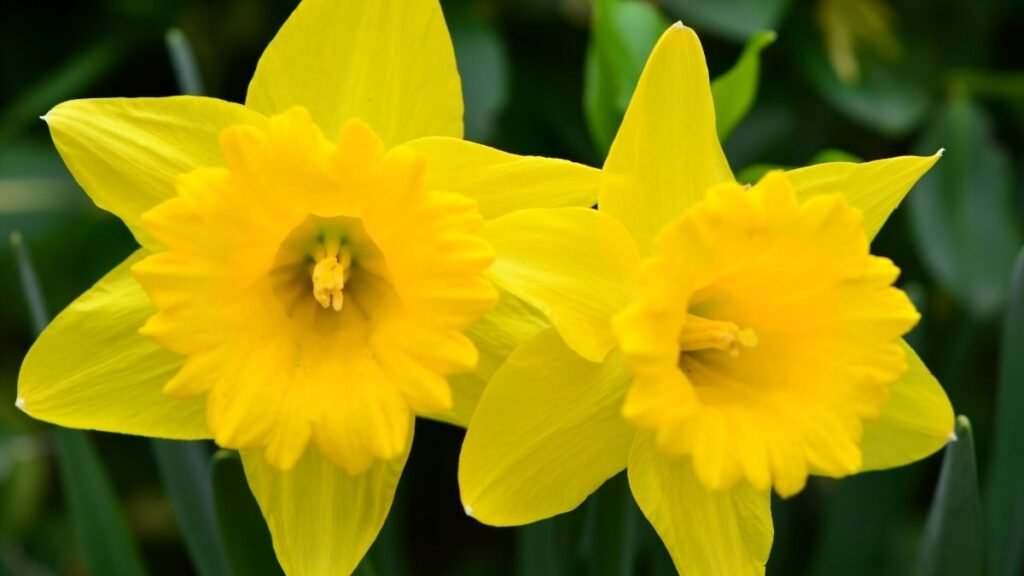
How to Plant Daffodils
- Plant daffodil bulbs in the fall, 6 inches deep in well-drained soil.
- Choose a sunny spot, although they can tolerate partial shade.
- Space the bulbs 4-6 inches apart.
- Water thoroughly after planting and cover with mulch to protect from winter frost.
- Once they bloom, daffodils need minimal care and will come back year after year.
Benefits of Daffodils
- Early Bloomer: Daffodils bring a splash of color to your garden early in the spring.
- Hardy: They are resistant to cold temperatures and can endure a variety of soil conditions.
- Low Maintenance: Daffodils need little care after planting, making them easy for beginner gardeners.
- Deer Resistant: Daffodils are not favored by deer, making them a great option for gardens with wildlife.
Conclusion
Flowers bring vibrancy, color, and a sense of peace to any garden. By carefully selecting and planting the right flowers, you can create a beautiful, low-maintenance space that provides enjoyment for years to come. Roses, tulips, sunflowers, lavender, and daffodils each offer unique aesthetic and practical benefits, from attracting pollinators to providing fragrance and visual appeal. Choose the flowers that best suit your garden and enjoy the rewards of their beauty and benefits.




